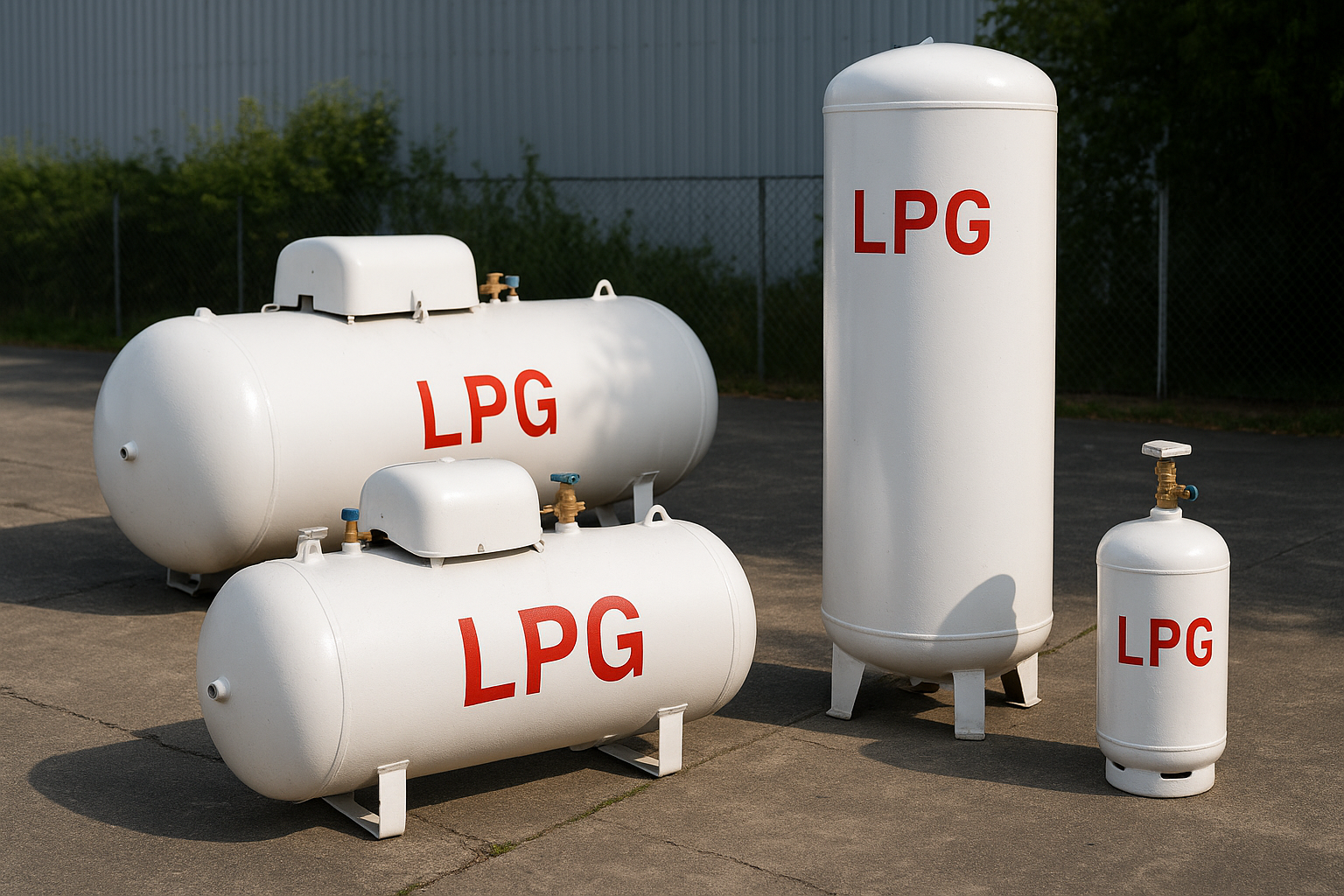LPG tanks are fundamental to the safe storage and efficient supply of Liquefied Petroleum Gas (LPG) across residential, commercial, and industrial sectors. From powering household kitchens to running large-scale industrial operations, the choice, installation, and maintenance of an LPG tank directly impact safety, performance, and operational efficiency. Whether you are a supplier, buyer, engineer, or facility manager, understanding the types, benefits, and best practices associated with LPG tanks is essential for smooth and secure operations. Let’s explore the complete guide to LPG tanks.
What is an LPG Tank?
An LPG tank is a high-pressure storage vessel designed specifically for liquefied petroleum gas. Constructed from robust, corrosion-resistant steel and equipped with protective coatings, these tanks are engineered to handle the extreme pressures of LPG while preventing leaks or pressure-related hazards.
LPG tanks provide a consistent and reliable fuel source for a wide range of applications. From residential cooking and heating in areas lacking natural gas pipelines to commercial kitchens, hotels, and industrial operations, these tanks are crucial for uninterrupted fuel supply and operational safety.
Types of LPG Tanks
LPG tanks come in various designs, each optimized for specific storage capacities, installation conditions, and operational requirements. Choosing the right type ensures safety, efficiency, and longevity:
1) Above-Ground LPG Tanks
- Easy access: Positioned above the ground, these tanks allow for simple inspection, maintenance, and valve adjustments without excavation.
- Cost-effective: Installation is relatively straightforward, reducing setup costs for residential and commercial users.
- Versatile use: Suitable for homes, restaurants, small businesses, and light industrial operations.
2) Underground LPG Tanks
- Space-saving: Installed below ground, freeing up valuable surface area and reducing visual impact.
- Weather protection: Subterranean placement shields tanks from extreme temperatures, UV exposure, and environmental wear, extending operational life.
- Aesthetic advantage: Ideal for commercial properties, resorts, or residential complexes where visual appeal is a priority.
3) Cylindrical vs. Spherical Tanks
- Cylindrical tanks: Commonly used for smaller-scale applications due to their practical shape, ease of transport, and installation flexibility.
- Spherical tanks: Designed for large-scale industrial and petrochemical operations where uniform pressure distribution is critical for safety and performance.
Key Benefits of LPG Tanks
Investing in a high-quality LPG tank brings multiple advantages that go beyond simple storage:
- Safe storage: Equipped with pressure relief valves, flame arrestors, and corrosion-resistant coatings, LPG tanks significantly reduce the risk of accidents.
- Consistent performance: Maintains steady pressure and flow rate, ensuring appliances, machinery, and industrial systems operate efficiently.
- Cost savings: Minimizes fuel wastage and operational downtime by providing reliable storage solutions.
- Versatile applications: From homes to large factories, LPG tanks meet diverse fuel requirements across sectors.
Applications & Industries
LPG tanks are indispensable across sectors requiring secure and reliable gas supply:
Residential
- Used for cooking, heating, and water heating in homes without access to natural gas pipelines.
- Provides a dependable energy source for remote or off-grid locations.
Commercial
- Restaurants, hotels, catering services, and bakeries rely on LPG tanks for uninterrupted cooking operations.
- Small businesses use them for heating, backup energy, or process-driven gas requirements.
Industrial
- Powering industrial boilers, manufacturing machinery, and heavy-duty equipment like forklifts.
- Commonly used in sectors such as food processing, chemical manufacturing, and petrochemical operations where continuous and controlled gas supply is critical.
Safety Guidelines & Maintenance Tips
Proper handling, regular inspection, and preventive maintenance are vital to ensure LPG tanks remain safe and functional:
- Regular inspections: Check for corrosion, dents, and leaks. Timely detection prevents accidents.
- Leak detection: Use non-flammable methods such as soap-water solutions. Never check leaks using open flames.
- Professional servicing: Certified technicians should handle installations, repairs, and periodic maintenance to comply with safety regulations.
- Proper ventilation: Tanks should be installed in well-ventilated areas away from heat sources and potential ignition points.
Where to Buy Quality LPG Tanks
At GasNeeds, we offer high-quality LPG tanks that meet UAE safety standards and international certifications. Our wide selection caters to residential, commercial, and industrial applications, ensuring that every customer finds the right tank for their specific requirements.
Explore LPG Tanks at GasNeeds
